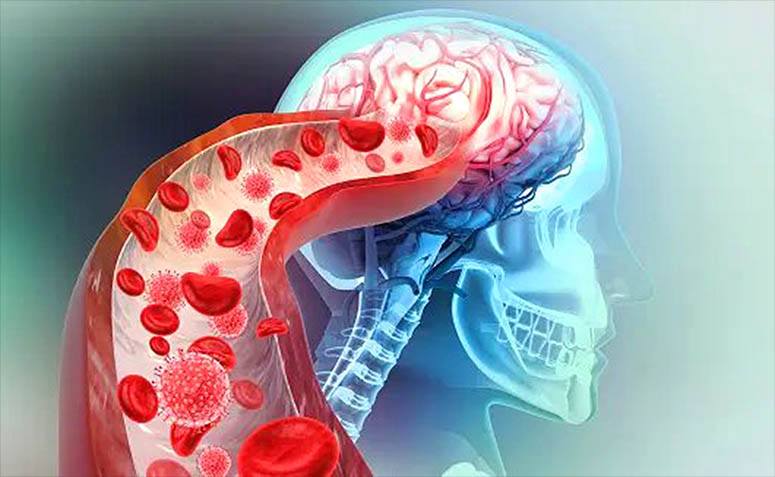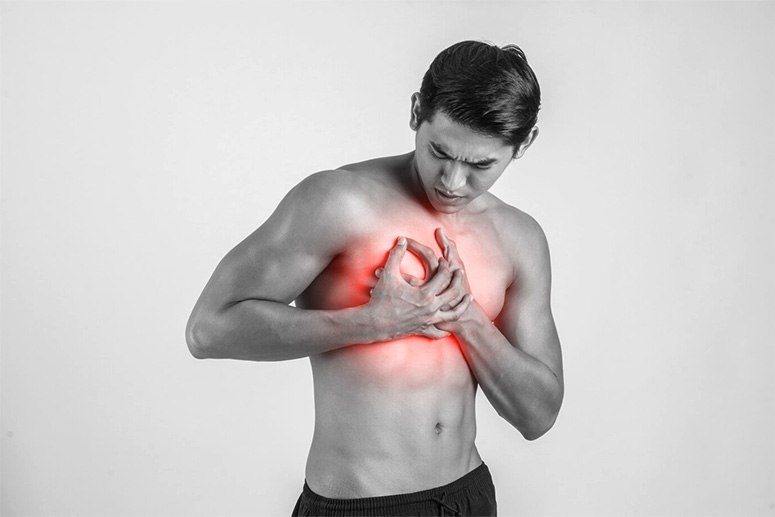Contents
Understanding the risk factors for strokes is crucial for prevention and timely intervention.
This article explores key elements that increase the likelihood of a stroke, such as age, family history, and health conditions like high blood pressure and diabetes.
Additionally, it addresses an important concern – what are the odds of having a second stroke? It also highlights the signs and symptoms to watch for, guidelines for preventing a second stroke, and essential actions to take if you suspect one is occurring.
Stay informed and enable yourself to protect your health.
What are the risk factors for having a stroke?
Understanding the risk factors associated with strokes is critical for effective stroke prevention and management, as these factors can significantly influence the odds of stroke occurrence.
Many individuals are unaware that conditions such as hypertension, diabetes, high cholesterol, and obesity can lead to ischemic or hemorrhagic strokes.
Furthermore, age and family history play crucial roles in determining one’s vulnerability to strokes, making it essential to assess these risks comprehensively to implement effective stroke risk management strategies.
1. Age
Age is a significant stroke risk factor, with the likelihood of experiencing a stroke increasing markedly as one gets older, particularly after the age of 55.
Research has shown that the odds of stroke nearly double for each decade of life after this point, making age a critical consideration in stroke awareness and prevention strategies.
This alarming statistic underscores the importance of understanding how age interacts with other risk factors, such as hypertension, diabetes, and cholesterol levels.
For those aged 65 and older, the statistics become even more striking, with nearly three-quarters of all strokes occurring in this age group.
This heightened risk is compounded by the presence of other comorbidities, which can further complicate prognosis and recovery.
Consequently, age not only serves as a predictive marker for the likelihood of a stroke but also plays a pivotal role in the rehabilitation and long-term outcomes for stroke survivors.
Therefore, recognizing age as a key variable can drive better education and intervention strategies aimed at reducing the overall impact of strokes in older populations.
2. Family history
A family history of stroke is a notable risk factor that can increase an individual’s likelihood of experiencing a cerebrovascular accident, as genetic predisposition plays a role in cardiovascular health.
Studies indicate that individuals with relatives who have had strokes are at a higher risk, underscoring the importance of understanding one’s medical history in stroke risk assessment.
Recognizing this link can enable those with a family history to take proactive steps in managing their health.
Understanding genetic predisposition is essential – it encourages individuals to adopt a lifestyle that includes regular exercise, a balanced diet low in saturated fats and cholesterol, and routine medical check-ups.
They can focus on controlling blood pressure and cholesterol levels, both critical factors that contribute to stroke risk.
By making informed choices and being vigilant about potential warning signs, individuals can significantly mitigate their risk, demonstrating that while genetics may play a role, lifestyle adaptations can have a profound impact on overall cardiovascular well-being.
3. High blood pressure

High blood pressure, also known as hypertension, is one of the most significant risk factors for stroke, contributing to both ischemic and hemorrhagic strokes.
Managing blood pressure is crucial for stroke prevention, as uncontrolled hypertension can damage blood vessels and increase the likelihood of a cerebrovascular accident significantly.
To reduce this risk, individuals should prioritize regular monitoring of their blood pressure levels, as early detection can lead to more effective management strategies.
Lifestyle changes such as adopting a heart-healthy diet, engaging in regular physical activity, and maintaining a healthy weight can play a transformative role in controlling hypertension.
It’s essential to work with healthcare providers to determine if medication is necessary, as this can provide further protection against the risks associated with elevated blood pressure.
By taking these proactive steps, individuals can significantly lower their chances of experiencing a stroke and improve their overall cardiovascular health.
4. Smoking
Smoking is a well-known risk factor for stroke, as it contributes to the development of atherosclerosis and other cardiovascular diseases, increasing the odds of stroke occurrence.
Quitting smoking can lead to significant improvements in overall cardiovascular health and is a crucial lifestyle change in stroke prevention efforts.
By harming blood vessels and reducing oxygen levels in the body, tobacco use dramatically alters physiological function, making it even more critical to address this habit.
The chemicals in cigarettes lead to inflammation and plaque buildup, which can ultimately block blood flow to the brain, resulting in a stroke.
For those looking to enhance their health, understanding the benefits of quitting is essential. Not only does cessation lower the risk of stroke, but it also improves circulation and heart function.
For anyone considering this change, seeking support through resources such as stop-smoking programs or counseling can significantly increase the likelihood of success.
5. Diabetes
Diabetes is a major stroke risk factor, as it can impair blood vessel function and contribute to cardiovascular health issues. Individuals with diabetes are at a significantly higher risk of both ischemic and hemorrhagic strokes, highlighting the importance of effective blood sugar control and lifestyle interventions in stroke prevention.
Managing diabetes is crucial not only for maintaining overall health but also for reducing the incidence of strokes. Poorly controlled blood sugar levels can lead to damage in the blood vessels, making them more prone to blockages and ruptures.
Alongside medication, adopting a balanced diet low in saturated fats and sugars, engaging in regular physical activity, and monitoring blood pressure can greatly mitigate these risks.
By prioritizing diabetes management, individuals can significantly lower their chances of experiencing a stroke, making it imperative to incorporate these strategies into their daily routines.
6. High cholesterol
High cholesterol levels are a significant contributing factor to stroke risk, particularly through their role in the development of atherosclerosis. Understanding cholesterol management is vital for stroke prevention, as lifestyle changes and medications can help lower cholesterol levels and consequently reduce stroke risk.
The accumulation of fatty deposits in the arteries not only narrows the blood vessels but also increases the likelihood of blood clots, which can lead to a stroke.
Individuals should be aware that incorporating regular exercise, a balanced diet rich in omega-3 fatty acids, and maintaining a healthy weight can significantly improve their cholesterol profile.
Routine health screenings can play a crucial role in identifying cholesterol issues early on, allowing for timely intervention.
By prioritizing these cholesterol management strategies, one can enhance overall cardiovascular health, ultimately leading to a decrease in stroke incidence.
7. Obesity
Obesity is a critical stroke risk factor, as excessive body weight is associated with various health issues that can lead to increased stroke risk, including hypertension and diabetes.
Implementing lifestyle changes, such as adopting a healthy diet and exercise regimen, is essential for managing weight and improving cardiovascular health.
These changes not only help mitigate the risk factors associated with obesity but also promote overall well-being.
For instance, maintaining a balanced diet rich in fruits, vegetables, whole grains, and lean proteins can significantly aid in weight loss and control blood sugar levels.
Incorporating regular physical activity—aiming for at least 150 minutes of moderate-intensity exercise each week—can enhance cardiovascular fitness while effectively reducing excess body fat.
By focusing on these holistic approaches, individuals can take proactive steps towards lowering their susceptibility to strokes and fostering long-term health improvements.
8. Previous stroke or TIA
A history of a previous stroke or transient ischemic attack (TIA) significantly increases the risk of experiencing a recurrent stroke, making it crucial for stroke survivors to engage in secondary stroke prevention practices.
Understanding the underlying risk factors associated with past cerebrovascular accidents can help healthcare providers implement effective follow-up care and monitoring strategies.
Such risk factors include hypertension, diabetes, and high cholesterol levels, which need diligent management to mitigate potential threats.
Rehabilitation programs play a pivotal role in recovery, focusing on physical therapy, cognitive exercises, and lifestyle adjustments that enable individuals to regain independence.
Ongoing medical interventions, such as anticoagulant medications or lifestyle modifications like a heart-healthy diet, can further reduce the likelihood of subsequent cerebrovascular events.
By addressing these aspects comprehensively, caregivers and medical professionals can significantly enhance the quality of life for those affected, while concurrently striving to minimize future risks.
What are the signs and symptoms of a stroke?

Recognizing the signs and symptoms of a stroke is crucial for timely intervention and effective stroke treatment, as early detection can significantly impact stroke outcomes.
Common stroke symptoms include:
- sudden weakness or numbness;
- trouble speaking or understanding speech;
- vision problems;
- dizziness or loss of balance;
- severe headache.
Being aware of these warning signs can facilitate prompt emergency response and improve the chances of recovery.
1. Sudden weakness or numbness
Sudden weakness or numbness, particularly on one side of the body, is often one of the first noticeable stroke symptoms and can serve as a critical indicator for a neurological assessment.
Recognizing this symptom quickly can lead to faster emergency response and timely medical intervention.
This immediate recognition is vital, as stroke outcomes are heavily influenced by the time it takes to receive appropriate care.
When these symptoms are detected, they may trigger a series of diagnostic tests, including imaging, to determine the type of stroke—whether it be ischemic or hemorrhagic.
Understanding the urgency of sudden weakness or numbness can encourage individuals and bystanders to act swiftly, potentially reducing long-term disabilities.
Education around these symptoms can enable communities, making it essential for people to know that every minute counts in averting severe damage and improving the chances of recovery.
2. Trouble speaking or understanding speech
Experiencing trouble speaking or understanding speech is a significant stroke symptom that can occur suddenly, affecting communication and comprehension abilities.
This symptom highlights the importance of stroke awareness and the need for immediate medical attention to prevent further complications.
When individuals face these challenges, their daily interactions can be severely compromised, leading to feelings of isolation and frustration.
Rapid intervention by healthcare providers is crucial, as timely speech therapy and rehabilitation can drastically improve recovery outcomes.
In many cases, these professionals play a vital role in identifying the extent of communication difficulties and developing tailored strategies to address them.
Understanding the nuances of speech impairments not only aids in the individual’s recuperation but also fosters a supportive environment that reassures family members during this trying period.
Proper attention to this symptom can pave the way for a more hopeful recovery journey.
3. Vision problems
Vision problems, such as sudden blurred or double vision, can be a critical stroke symptom that warrants immediate medical attention, as they indicate possible damage to brain areas responsible for sight.
Recognizing this sign can lead to prompt diagnosis and effective stroke treatment.
Understanding the significance of these visual disturbances is essential, as they not only affect a patient’s ability to see clearly but can also impact their overall recovery trajectory.
Early detection of such symptoms can enable healthcare professionals to initiate appropriate interventions swiftly, which may enhance the potential for rehabilitation and improve quality of life post-stroke.
Stroke survivors often face a range of challenges, including difficulties in spatial awareness and visual processing, underscoring the importance of comprehensive assessments and tailored therapies in addressing these vision-related complications.
4. Dizziness or loss of balance
Dizziness or loss of balance is a concerning stroke symptom that can affect an individual’s stability and coordination, often leading to falls and injuries.
Recognizing this symptom quickly can facilitate immediate emergency response and improve the chances of effective stroke treatment.
In stroke patients, such symptoms can indicate a disruption in the brain’s ability to process balance and spatial orientation, highlighting the need for swift action.
Timely recognition enables caregivers, family members, or bystanders to seek emergency medical assistance without delay. The implications can be severe – untreated dizziness may lead to complications such as repeated falls or further cognitive decline.
Healthcare providers can take advantage of early intervention strategies to enhance recovery outcomes. Thus, understanding the nuances of these symptoms is essential for both patients and their support networks.
5. Severe headache
A sudden, severe headache that may feel different from a normal headache can be an indicator of a hemorrhagic stroke, requiring immediate medical evaluation.
This stroke symptom is crucial for diagnosis and can significantly impact treatment outcomes.
Such headaches, often described as a “thunderclap” or the “worst headache of one’s life,” can be distinct from tension-type or migraine headaches, making accurate differentiation essential.
Recognizing the unique characteristics of these stroke-related headaches can aid in rapid medical intervention, which is vital since timely treatment can minimize neurological damage and improve recovery prospects.
Patients experiencing such symptoms should seek immediate medical attention to ensure that underlying conditions, such as bleeding in the brain, are addressed without delay, highlighting the need for awareness and prompt action in the face of such alarming signs.
How can you prevent a second stroke?

Preventing a second stroke is critical for stroke survivors, as the risk of recurrent stroke is significantly heightened following an initial cerebrovascular accident.
Implementing a comprehensive stroke prevention plan that includes lifestyle changes, medication adherence, and regular health monitoring can markedly reduce the chances of experiencing another stroke, enhancing overall health outcomes.
1. Lifestyle changes
Adopting lifestyle changes is one of the most effective ways to prevent a second stroke, as these alterations can significantly impact overall cardiovascular health.
Key lifestyle modifications include maintaining a healthy diet, engaging in regular physical activity, and committing to smoking cessation, all of which contribute to reducing stroke risk factors.
In particular, embracing a heart-healthy diet rich in fruits, vegetables, whole grains, and lean proteins can help control blood pressure and cholesterol levels.
Those focused on prevention should also limit saturated fats, sugar, and sodium to further support their cardiovascular well-being.
Incorporating at least 150 minutes of moderate aerobic exercise weekly, such as brisk walking or swimming, can enhance circulation and lower the risk of recurring strokes.
Effective strategies for quitting smoking, including counseling and support groups, can lead to improved vascular health and decreased likelihood of a second stroke, making it essential for individuals to take proactive steps toward a healthier lifestyle.
2. Medications
Medications such as anticoagulants and blood thinners are often prescribed to stroke survivors to prevent a second stroke by managing blood flow and reducing clotting risk.
Adhering to prescribed medication regimens is crucial for effective stroke prevention and long-term health.
Plus these medications, antiplatelet agents like aspirin may also be recommended, depending on individual health profiles and the type of stroke experienced.
This multifaceted approach aims not only at reducing the risk of another stroke but also at addressing any underlying conditions that might contribute to ongoing vascular issues.
It is essential for patients to be aware of potential side effects, such as increased bruising or gastrointestinal discomfort, which can occur with these therapies.
Regular consultations with healthcare providers can aid in managing these risks and ensuring that survivors remain committed to their treatment plans, ultimately leading to improved overall outcomes.
3. Surgery
In some cases, surgical interventions such as carotid endarterectomy may be necessary to prevent a second stroke, especially in patients with significant carotid artery stenosis.
These procedures can significantly reduce stroke risk and improve overall health outcomes.
Surgery might be recommended when non-invasive strategies like medication and lifestyle changes do not adequately address risk factors.
Carotid endarterectomy involves removing plaque buildup from the carotid arteries, thereby improving blood flow to the brain. Alternatively, angioplasty and stenting can also be employed to open narrowed vessels without extensive surgery.
While these procedures offer the potential for improved circulation and reduced stroke incidents, it’s crucial to consider the associated risks, such as infection, bleeding, or even stroke, especially in the immediate aftermath of the operation.
Therefore, thorough evaluation and discussion between healthcare providers and patients are essential to make informed decisions.
What should you do if you think you’re having a second stroke?
If you suspect you are having a second stroke, it is critical to act quickly and call emergency services immediately, as timely intervention is essential for favorable health outcomes.
Recognizing stroke symptoms and understanding the need for rapid emergency response can dramatically influence treatment effectiveness and recovery.
Early signs may include sudden weakness on one side of the body, confusion, difficulty speaking, or changes in vision.
If these symptoms occur, it is vital to remember the acronym FAST:
- Face drooping;
- Arm weakness;
- Speech difficulties;
- Time to call emergency services.
When contacting emergency personnel, provide clear information about the symptoms experienced and any medical history relevant to strokes.
Gather any medications on hand and prepare to answer questions about the duration of symptoms to assist medical professionals in their evaluation upon arrival.
You can find details about the odds of a second stroke in our FAQ located a bit further down the page.
Discover the captivating world of probabilities and rare events. Quench your curiosity and explore more fascinating subjects at WhatAreTheOddsOf.NET.



